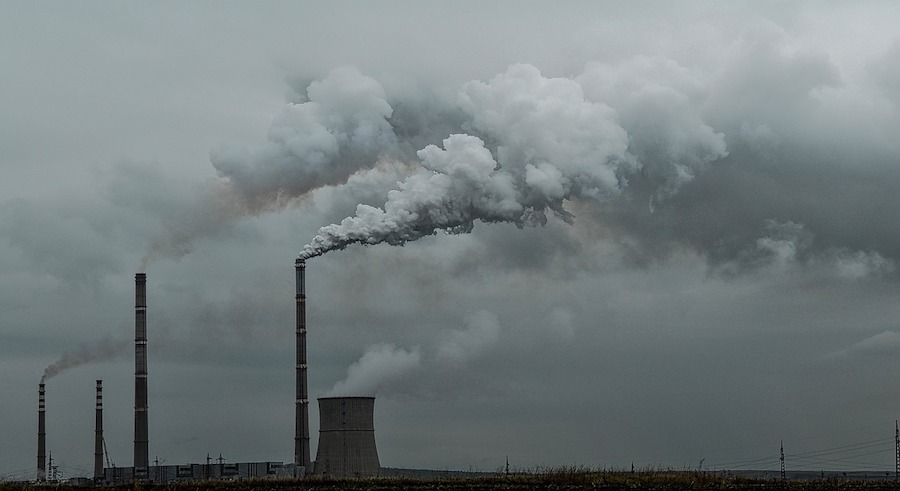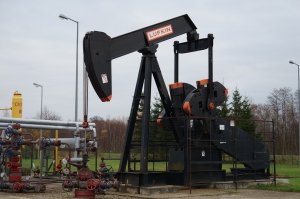Every day it becomes clearer that we have to break our addiction to extracting dirty stuff from the ground to burn for energy. But how to pull it off without triggering political and economic chaos? Economist James K. Boyce, a senior fellow at the Political Economy Research Institute of the University of Massachusetts Amherst, is the author of a new book exploring that question, The Case for Carbon Dividends. In a conversation with the Institute for New Economic Thinking, he outlines a plan that could not only reduce carbon emissions, but help bridge the gap between the rich and the rest. And it might even survive the political system.
Lynn Parramore: You take it as a given that the key to reducing fossil fuel use is to put a price on carbon emissions. But some say that it won’t really impact climate change or that it will hurt the economy in various ways. How do you respond?
James K. Boyce: A price on carbon emissions is one key piece of the solution. But it can’t be just any price: it has to be anchored to an emissions-reduction trajectory that is consistent with climate objectives, such as the Paris target of limiting the increase in average global temperatures to 1.5-2 °C.
There are a several options for doing that. One is putting a cap on the total amount of fossil fuels allowed to enter the economy, a cap that would get lower over time. Then, we could auction allowances (also called permits) up to the limit set by the cap. Another option is a tax that is indexed to emission targets, so that the rate adjusts automatically as needed, sort of like an adjustable-rate mortgage. Or we could have a combination of the two, in which the tax is the floor price for permit auctions.
Arbitrarily setting a price and hoping it will do the job is a recipe for uncertainty at best and failure at worst. It’s true that most carbon prices across the world today are too low to have had a substantial impact on emissions. But that’s an argument for a more robust price, not for a price of zero. Just because you’ve tasted weak coffee doesn’t mean you should never drink coffee again.
Would a carbon price that is robust enough to do the job “hurt the economy”? Quite the contrary. What will really hurt the economy is failure to stabilize the Earth’s climate. A carbon price firmly anchored to emissions-reduction goals will reorient the economy towards greater energy efficiency and cleaner energy. The resulting innovation and investment will grow the economy, but grow it in a new direction, leaving behind the fossil-fueled era.
LP: What exactly are carbon dividends?
JB: Carbon dividends are equal payments to every resident funded with the revenue from putting a price on carbon.
LP: So that means once these revenues start rolling in, everybody gets checks in the mail?
JB: That’s the idea. Dividends can be disbursed monthly, quarterly, or annually. It’s not rocket science to do this. Alaska already pays dividends to all state residents with revenue from oil extraction. One could even front-load the payments, so that the first dividend arrives as soon as fuel prices go up.
The economic principle behind carbon dividends is called a “feebate”: individuals pay fees according to their use of a shared resource, and receive rebates by virtue of their common ownership of the resource. The idea can be illustrated by an analogy.
Suppose that 1,000 people work in an office building whose parking lot has only a few hundred spaces. If everyone could park free of charge, there would be chronic excess demand. To avert the resulting congestion, a fee is charged to limit demand for parking spaces to the lot’s capacity. Every month the money that is collected in parking fees is paid out as equal rebates to everyone who works in the building. Those who bicycle to work or take public transport come out ahead: they pay nothing to park and still get their share of the revenue. Those who carpool more or less break even. Those who commute every day in a single-occupancy vehicle pay more in fees than they get back.
Carbon dividends apply this idea to parking emissions in the atmosphere.
LP: How does your proposal fit into the idea of a Green New Deal?
JB: The centerpiece of the Green New Deal is investment and innovation in a clean energy economy that works for everyone, not just for the richest one percent. Carbon dividends fit perfectly with this idea.
Placing a strict limit on how much fossil fuel we burn – which increases their price – strengthens the incentives for individuals, firms, and governments to invest in the clean energy economy of the future. And dividends are paid to everyone, so the revenue from higher fuel prices, the carbon price, is not pocketed by the wealthy and powerful few. Carbon dividends are based on the principle that we all own the atmospheric parking lot in common and equal measure.
The net impact of the price-and-dividend policy on any household’s income depends on the size of its carbon footprint. Most low-income households come out ahead, since they consume less-than-average amounts of just about everything, including fossil fuels. Most middle-class households break even or come out a bit ahead. Upper-income households generally pay more in higher fuel prices than they get back in dividends, because of their higher consumption of just about everything, including fossil fuels.
LP: So that keeps carbon taxes or prices from hurting people who can least afford it, like truck drivers or ordinary commuters.
JB: Right. In industrialized countries like the U.S., fuels are more of a necessity than a luxury. As a percentage of their incomes – although not in terms of absolute dollars – the poor spend more on fossil fuel than the middle class, and the middle class spends more than the rich. In the absence of dividends, in other words, carbon prices are tantamount to a regressive tax.
One possible alternative use for carbon revenue is to fund public investment, including investments in a Green New Deal. It would be possible to use some revenue for this purpose and some for dividends. Back in 2009, for example, Senators Maria Cantwell (D-WA) and Susan Collins (R-ME) introduced a bill that would have capped emissions, auctioned permits, returned 75% of the revenue to the people as dividends, and devoted the remaining 25% to public investment. But it would be an irony – and a serious political liability – if the Green New Deal were funded mainly by a regressive tax.
LP: How would the carbon dividends plan be implemented?
JB: It’s pretty straightforward. We know how to auction carbon permits. The northeastern states, for example, have been doing it four times a year for the past decade in the Regional Greenhouse Gas Initiative for curbing power plant emissions. We know how to pay dividends. The Alaska Permanent Fund has been doing it for more than 30 years.
The easiest way to disburse dividends is via electronic payments. Just like Social Security and veterans’ benefits. Those who prefer them can get checks in the mail. A compelling advantage of disbursing dividends as stand-alone payments, rather than in the form of income tax credits or by some other indirect route, is to ensure that they are completely visible to the public. This visibility is crucial for the political durability of carbon pricing. People will see fuel prices rising at the pump. At the same time, they need to see the revenue coming back to them in a fair and transparent manner.
To protect energy-intensive, trade-exposed industries, most carbon pricing proposals include border adjustments like carbon tariffs on imports and rebates to exporters. That way, companies can maintain their competitiveness vis-à-vis producers in locations without a comparable carbon price.
The price-and-dividend plan could be implemented by individual states, too. One way to tackle the competitiveness issue at the state level is to set aside a share of the total carbon revenue equal to what is paid by businesses, and to rebate this to firms in equal amounts per employee. A side-benefit of this would be to strengthen incentives for job creation. The same can be done for local governments. This has been proposed in Massachusetts.
LP: How does this idea win support across the political spectrum?
JB: I use the term “libertarian socialism” to describe the underlying philosophy behind carbon dividends. The concept is libertarian in its respect for the individual, and socialist in its commitment to equality. Today the labels “libertarian” and “socialist” are usually affixed to opposite ends of the political spectrum. But there is a strong connection between the egalitarian distribution of power and the egalitarian distribution of wealth, central tenets of liberty and socialism, respectively. Carbon dividends are consistent with both.
In the U.S., carbon dividends have gained support on both sides of the political aisle. The Cantwell-Collins bill was the last bipartisan climate legislation proposed in the Senate. A new House bill called the Energy Dividend and Carbon Dividend Act is co-sponsored by a Democrat and a Republican. Democratic Senator Chris Van Hollen of Maryland, who championed carbon dividends as a Congressman, has proposed a new bill in the Senate. Republican elder statesmen George Shultz and James Baker are among the co-authors of “The Conservative Case for Carbon Dividends,” a proposal advanced two years ago by the Climate Leadership Council (CLC). The Citizens’ Climate Lobby, a non-partisan advocacy group, has been working to build grassroots support for carbon dividends around the country.
In my view, bipartisan support is essential if climate policy is to be politically durable. An effective climate policy cannot be a one-off victory: it must endure long enough to see the clean energy transition to its conclusion. A policy that is vulnerable to being scrapped when there is a change of power in Washington won’t cut it.
The Yellow Vest movement that broke out in France last November was sparked by the Macron government’s announcement of a fairly modest increase in fuel taxes. The reaction is a loud and clear warning of the dangers in any policy that combats climate change at the expense of working people. Political leaders and clean energy advocates around the world have taken notice. German Green Party co-leader Annalena Baerbock recently said, “the lesson from France is that we cannot save the climate at the expense of social justice.” I think that is absolutely right. Carbon dividends are a way to combine the two.
LP: How do we overcome the big-money influence of those invested in the fossil-fuel economy? Who is currently supporting carbon dividends and who is opposed?
JB: Good question. For starters, it’s important to distinguish between capital and labor. Fossil capital faces losses in the form of stranded assets: plant and equipment, and reserves in the ground, whose market value will fall in some cases to zero in the clean energy transition. I don’t feel overly sorry about this. It’s what happens to firms in a market economy when they make bad investment decisions. I hope that betting on continued use of dirty energy will turn out to be a really, really bad decision.
In the meantime, these firms had a pretty good run for their money.
Labor – and here I mean not only workers in the fossil-fuel sector but also communities that depend on them – is a different matter. The workers and communities that provided our energy in the past performed a great service. They need and deserve assistance as we shift to the clean energy economy. A just transition is a key component of the Green New Deal.
Fossil capital is likely to oppose any policies that would sweep its assets into the dustbin of history. The only way to overcome this opposition is to build a broad and deep alliance among everyone who puts the long-term well-being of our children, our grandchildren, and humankind ahead of the short-term greed of those who profit in the fossil-fuel status quo.
But it’s been interesting to see that some energy firms, including ExxonMobil, Shell, and BP, came out in support of the Climate Leadership Council’s (CLC) “conservative case” for carbon dividends.
LP: Is that kind of support a sign that there’s something wrong with the idea of carbon dividends?
JB: It’s important to distinguish the baby from the bathwater. I think there are two specific features of the CLC plan that made it palatable to some oil-and-gas firms. The first is the initial carbon price: $40 per ton of carbon dioxide. This would be enough to spur the shutdown of coal-burning power plants in favor of natural gas-fired plants, expanding the market for gas producers, while not being high enough to make a serious dent in demand for transportation fuels. The plan was vague on how the price would increase over time, but for Big Oil $40 may be just about the sweet spot.
The second inducement was a curious line of legalese inserted in the CLC plan saying that carbon taxes “would make possible an end to federal and state tort liability for emitters.” There is no intrinsic connection whatsoever between a liability waiver and carbon dividends. I can only surmise that this was put in as a carrot for the corporations. If so, and if this was enough to get them to sign on, it reveals just how deep the anxiety runs in boardrooms about the prospect of being held to account for the colossal harm that fossil fuel corporations have inflicted on people and the planet. The precedents of Big Tobacco, the demise of Union Carbide after the Bhopal chemical disaster, and the bankruptcy of Johns-Manville Corporation due to asbestos liability are instructive here. I regard corporate liability as a valuable bargaining tool that should not be relinquished lightly.
In speaking to diverse audiences about carbon dividends, I’ve often been asked, “This seems like a great idea – why haven’t I heard of it before?” I explain that it’s because no one stands to get rich from carbon dividends. No big-money interests are paying anyone to publicize the idea. The only way we will get carbon dividends – and the only way we will see effective solutions to the climate crisis – is for the people to join together and demand them. That is the bottom-line message of the book.








